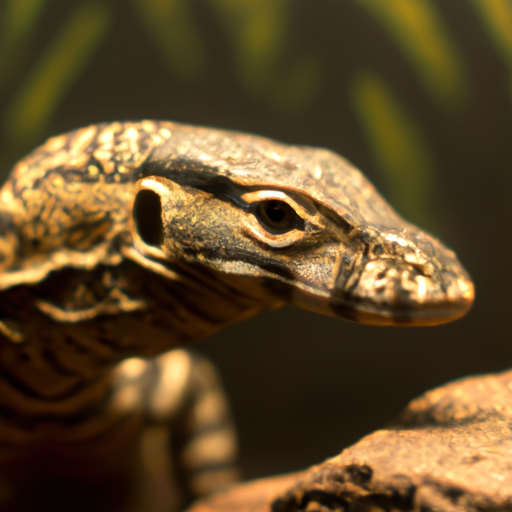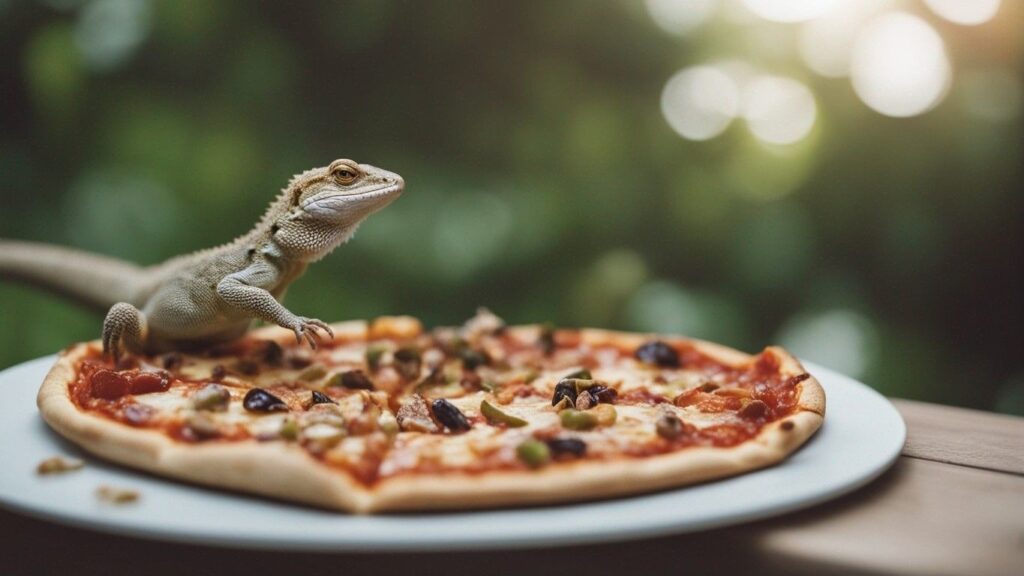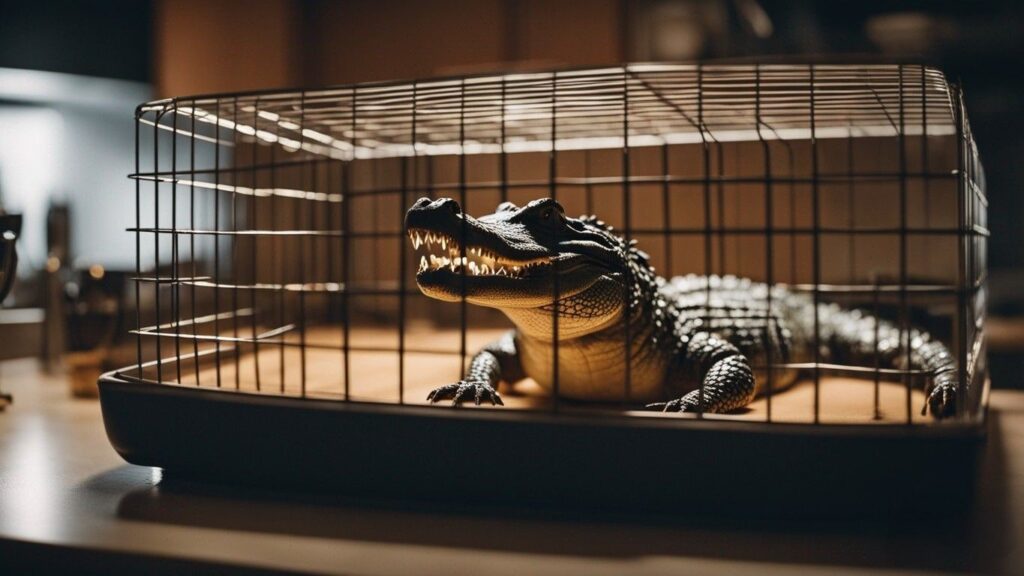So you’re considering getting a pet, but you’re tired of the typical cats and dogs? Enter: monitor lizards.
These fascinating creatures have gained popularity as exotic pets, but the burning question remains – are monitor lizards actually good pets?
Well, before you embark on this scaly adventure, it’s important to weigh the pros and cons of owning a monitor lizard.
From their impressive size and unique characteristics to the challenges they may present, this article will help you determine whether a monitor lizard could be the right pet for you.
Physical characteristics of monitor lizards
Monitor lizards are known for their impressive physical characteristics, which make them both fascinating and unique pets. When it comes to size, monitor lizards vary greatly depending on the species. Some may measure only a few feet long, while others can grow up to several feet in length. Their long, muscular bodies are covered in scales, giving them a reptilian appearance that many find captivating. Monitor lizards have a rather stocky build, with powerful legs and a tapering tail that aids in their excellent maneuverability. One of the most striking features of monitor lizards is their long, forked tongues that they use to gather scent particles in order to sense their surroundings.
Size
As mentioned earlier, the size of monitor lizards can vary significantly between species. Some of the smaller species, such as the black-throated monitor, may reach a length of around 3 to 4 feet when fully grown. On the other hand, larger species like the Asian water monitor can grow over 6 feet in length and weigh over 150 pounds. It is important for potential owners to research and understand the size potential of the specific monitor lizard they wish to keep as a pet, as it will have an impact on their housing requirements and handling needs.
Appearance
Monitor lizards possess a distinct and awe-inspiring appearance. Their bodies are covered in scales, which can vary in color and pattern depending on the species. Some have vibrant patterns that help with camouflage in their natural habitats, while others have more solid colors. The scales are usually rough to the touch, adding to their reptilian charm. These lizards possess sharp claws and a powerful bite, which is a testament to their carnivorous nature and their need for specialized care.
Lifespan
Monitor lizards are known for their relatively long lifespans compared to other reptile pets. While the lifespan can vary depending on the species, proper care and a suitable environment can help ensure a monitor lizard lives a healthy and fulfilling life. In general, monitor lizards can live for 10 to 20 years, with some even reaching their 30s or 40s in exceptional cases. It is crucial for prospective owners to understand the commitment and responsibility that comes with caring for a pet that may be a part of their lives for several decades.
Temperament and behavior
Monitor lizards have garnered a reputation for their sometimes challenging temperament and behavior. While they can exhibit docile and curious behavior with proper handling and socialization, they also have the potential to display aggression and territorial tendencies. Understanding their natural behaviors and providing appropriate environmental enrichment is key to managing their temperament.
Aggression
Monitor lizards, especially the larger species, can display aggression if they feel threatened or stressed. It is essential to respect their boundaries and provide them with security in their enclosure. Proper socialization and positive reinforcement training can help mitigate aggressive behaviors. However, it is important to note that some monitor lizards may have a predisposition towards aggression, making them unsuitable for inexperienced reptile keepers or households with small children or pets.
Intelligence and trainability
Monitor lizards are renowned for their high intelligence levels. They have an innate curiosity and can learn to recognize their caregivers over time. While they can be trained to some extent, it is important to remember that they are still wild animals with instinctual behaviors. Basic obedience training and enrichment activities can provide mental stimulation and create a stronger bond between the owner and the lizard. However, training a monitor lizard requires patience, consistent positive reinforcement, and a thorough understanding of their unique needs.
Activity level
Monitor lizards are generally active animals, especially during their active periods in the daytime. They enjoy exploring their surroundings, climbing on structures, and burrowing in substrate. Adequate space and environmental enrichment is crucial to maintaining their physical and mental well-being. Regular exercise outside of their enclosure, under careful supervision, can also provide further stimulation and prevent them from becoming bored or restless.

Housing requirements
Providing proper housing for monitor lizards is essential to their overall health and well-being. Here are some key considerations when it comes to their housing requirements.
Terrarium size
Monitor lizards require spacious enclosures that can accommodate their size and allow for natural behaviors. The size of the enclosure will largely depend on the species of monitor lizard being kept, as larger species will need more room to move and exhibit natural behaviors. It is generally recommended to provide a terrarium that is at least four to six times the length of the lizard. A taller enclosure with plenty of climbing opportunities is also beneficial for their physical and mental stimulation.
Lighting and heating
Monitor lizards, being ectothermic creatures, rely on external heat sources to regulate their body temperatures. Proper lighting and heating are crucial to providing a suitable environment for monitor lizards. A combination of UVB lighting and basking lights is necessary to provide the necessary ultraviolet light for calcium metabolism and to simulate a natural day-night cycle. The basking area should have a temperature gradient, allowing the monitor lizard to regulate its body temperature by moving between warmer and cooler areas within the enclosure.
Substrate and decor
Choosing the appropriate substrate for a monitor lizard’s enclosure is important for maintaining proper hygiene and mimicking their natural habitat. Substrates such as cypress mulch, coconut coir, or a mixture of organic topsoil and sand can be used. These substrates should be deep enough for the monitor lizard to burrow and allow for easy maintenance. Adding various climbing structures, hide spots, and artificial or live plants can create a more enriching and visually appealing environment for the lizard.
Feeding and dietary needs
Monitor lizards are carnivorous animals with specific dietary requirements. Meeting their nutritional needs is crucial to their overall health and longevity.
Carnivorous nature
Monitor lizards are opportunistic hunters in the wild, primarily feeding on small mammals, birds, insects, and other reptiles. A diet rich in animal protein is essential for their growth and well-being. It is important to provide a varied diet that includes whole prey items such as rodents, chicks, and insects. It is generally recommended to feed monitor lizards whole prey items rather than relying solely on commercially prepared diets, as this more closely simulates their natural hunting and feeding behaviors.
Feeding schedule
Monitor lizards should be fed regularly, with the frequency and portion size varying based on their age, size, and species. Younger monitor lizards may require daily feedings, while adults can be fed every two to three days. It is important to monitor their body condition and adjust feeding accordingly to prevent obesity or malnutrition. Offering food in a separate feeding enclosure allows for easier monitoring and prevents the accidental ingestion of substrate or other foreign objects.
Dietary variety
To ensure a well-rounded diet, it is essential to offer a variety of prey items to monitor lizards. Feeding a diverse range of prey species helps provide different nutritional components and prevents nutritional deficiencies. Including calcium and vitamin supplements is also important to maintain proper bone health. As with any reptile, it is crucial to do thorough research on the specific dietary requirements of the monitor lizard species being kept in order to ensure their nutritional needs are being met.

Grooming and hygiene
Monitor lizards have specific grooming needs to maintain their health and hygiene. Here are some important aspects to consider:
Bathing and soaking
Keeping monitor lizards hydrated is essential, and providing a shallow water dish in their enclosure allows them to drink and soak as needed. Soaking helps prevent dehydration, aids in shedding, and can be an enjoyable and enriching activity for the lizard. Regular monitoring of the water quality and cleanliness is important to prevent the growth of harmful bacteria.
Nail trimming
Monitor lizards’ sharp claws can become long and potentially cause injury to themselves or their handlers. Regular nail trims are necessary to keep their claws at a safe and manageable length. Caution should be exercised when trimming their nails, as they can be sensitive in this area. Seeking the help of a qualified veterinarian or reptile expert is recommended if uncertain about the proper technique.
Skin shedding
As with most reptiles, monitor lizards periodically shed their skin. Shedding allows for growth and the removal of parasites and old skin. Providing a proper humidity level within the enclosure and offering appropriate shelters or hide spots aids in successful shedding. Care should be taken to ensure the shed skin is entirely removed, especially around the toes and tail tip, to prevent any potential issues.
Health and veterinary care
Monitoring the health of a monitor lizard is crucial, as early detection of any health issues can lead to timely intervention and treatment. Regular veterinary check-ups and a suitable healthcare regimen should be implemented.
Common health issues
Monitor lizards are prone to certain health issues, including respiratory infections, metabolic bone disease, parasite infestations, and mouth infections. Observing their behavior, appetite, and physical appearance can help identify any signs of illness or distress. If any concerns arise, consulting a reptile veterinarian with experience in monitor lizards is recommended for a proper diagnosis and treatment.
Regular check-ups
Regular veterinary check-ups should be scheduled to ensure the overall health and well-being of the monitor lizard. These check-ups allow for routine examinations, monitoring weight and growth, and addressing any health concerns or questions. It is important to find a qualified reptile veterinarian who is knowledgeable about monitor lizards and their specific care requirements.
Veterinary costs
The cost of veterinary care for monitor lizards can vary depending on the location, the specific veterinarian, and the nature of the visit or treatment required. Routine check-ups, vaccinations, and preventive care expenses should be considered. In addition, potential costs may arise from diagnostic tests, medications, or surgical procedures. It is important to budget for these veterinary costs to ensure the well-being of the monitor lizard.
Interaction and handling
Interaction and handling of monitor lizards require caution, respect for their temperament, and an understanding of their natural behaviors. Here are some considerations for safely interacting with monitor lizards.
Bites and scratches
Monitor lizards possess strong jaws with sharp teeth, and their claws can also be quite sharp. Due to their potentially aggressive or skittish nature, there is a risk of bites or scratches if caution is not exercised during handling. Proper training, socialization, and gradual acclimatization to handling can help reduce the risk of injury. It is important to handle them confidently but gently, avoiding sudden movements and knowing how to read their body language.
Supervision and safety precautions
Supervision is of paramount importance when interacting with monitor lizards, especially in households with small children or other pets. Their strength, speed, and size can pose a potential risk if not properly managed. It is advisable to have a designated and secure area for interactions, ensuring the environment is safe for both the monitor lizard and the human participants.
Bonding and socialization
Building a bond and facilitating socialization with a monitor lizard requires patience, consistency, and positive reinforcement. Spending regular, quality time with the monitor lizard, allowing them to explore their surroundings, and providing positive experiences can help build trust and a stronger relationship. It is essential to remember that each monitor lizard has its own unique personality and may have varying preferences when it comes to handling and interaction.
Legal considerations
Before considering a monitor lizard as a pet, it is important to research and understand the legal regulations regarding their ownership.
Ownership regulations
Depending on your location, monitor lizards may be subject to specific ownership regulations. Some jurisdictions may require permits or licenses to keep certain species of monitor lizards. It is crucial to comply with local regulations and ensure that keeping a monitor lizard as a pet is legal in your area.
Restrictions and permits
Certain monitor lizard species may be protected by wildlife conservation laws, making it illegal to own or handle them. These restrictions are in place to preserve the species in their natural habitats. Understanding the specific species and subspecies that are allowed for private ownership is important to avoid any legal issues.
Ethical concerns
While monitor lizards can make fascinating and rewarding pets for those with the proper knowledge and commitment, it is important to consider the ethical concerns surrounding their captivity. Monitor lizards have complex and specific care requirements, and it may not be feasible or ethical for everyone to provide the necessary environment and care that these creatures need. Ensuring that their needs for space, mental stimulation, and proper nutrition can be met is crucial in making an informed and responsible decision about keeping them as pets.
Cost and commitment
Owning a monitor lizard comes with financial costs and long-term commitment. Considerations of both initial setup expenses and ongoing care expenses should be made before deciding to bring a monitor lizard into your life.
Initial setup expenses
Setting up a suitable and safe environment for a monitor lizard can incur significant costs. Expenses may include the enclosure and its accessories, such as lighting fixtures, heating elements, substrate, decor, and climbing structures. The cost of high-quality reptile-specific supplements, feeding dishes, and a reliable thermometer and hygrometer should also be considered.
Ongoing costs
The cost of maintaining a monitor lizard includes regular feeding expenses, additional lighting and heating requirements, veterinary check-ups, and potential medical costs in case of illness or injury. Additionally, the cost of providing a well-balanced diet that includes live prey items or frozen rodents can add up over time. These ongoing costs should be factored into the decision-making process to ensure that the commitment to the monitor lizard’s care can be adequately met.
Time and dedication
Caring for a monitor lizard requires time and commitment. Daily feeding and maintaining proper environmental conditions, as well as regular socialization and interaction, are crucial for the well-being and happiness of the lizard. Their long lifespan means they will be a part of your life for many years, necessitating a long-term dedication to their care and ensuring their physical and mental needs are consistently met.
Final Thoughts
While monitor lizards possess fascinating physical characteristics and can be captivating pets, they require specific care and dedication.
Understanding their size, temperament, housing requirements, dietary needs, and health considerations is essential for providing a suitable environment and ensuring their well-being.
As with any pet, thorough research, a deep commitment to their care, and responsible ownership are vital.
Before considering a monitor lizard as a pet, it is important to carefully assess the impact on your lifestyle, finances, and ability to provide the necessary husbandry requirements.
With proper knowledge and commitment, monitor lizards can indeed be good pets for experienced reptile enthusiasts who are willing to meet the challenges and rewards of keeping these incredible creatures.




